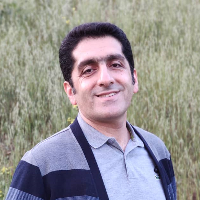The impact of Modernity on Physical and Spatial Transformation of Rural Settlements in Iran
Author(s):
Abstract:
Spatial settings and geographic landscapes (urban and rural) are evident phenomena resulting from the linkage between mans thought and his place. Urban and rural areas as geographical landscapes are spatial containers, which manifest intellectual abilities in their structure and function under conditions of time. In fact, structural-functional characteristics of ecological domains are affected by theories and paradigms that derived from human thinking. As Marshall Berman points out, by the advent of modern thinking, a new human environment conception was created which replaced the old ones. This greatly affected the path of life generating new forms of corporate power and class struggle, which leads to immense demographic upheavals severing millions of people from their ancestral habitats. The constant flow of people surfing the world seeking new lives and the rapid and often cataclysmic urban growth, systems of mass communication, binds together the most diverse people and societies.
Rural settlements, as one of the geographical areas in the country have witnessed many changes, especially over the past five decades. These changes which have occurred in various aspects, in particular physical aspect have been affected by several factors. Among these, the influence of modernism on the policy-making and planning is very important. Considering different viewpoints toward modernity, this paper critically reviews the changes occurred in villages which have been influenced by these factors. In this study, two questions were of utmost importance: First, whether spatial and physical changes occurring in Iran's rural settlements are influenced by modern thinking in the planning system of the country or merely modernization as a trend itself. Second, whether the transformation and modernization in physical system of rural fabric in Iran is essentially undesirable and a nostalgic perspective toward rural culture is necessary.
Addressing these research questions may provide a context for applicable rural development policies in a more appropriate direction, especially in the physical planning. Yet there is a major challenge intellectually between two systems of thoughts: modern thinking (focusing on the formation of new spatial elements) and ecology-oriented (nostalgia-oriented) in planning and implementation of rural development projects. The present paper as a theoretical fundamental research has been developed by meta-analysis method. Statistical populations are chosen from rural settlements in Iran and their physical and spatial transformation in contemporary period (Pahlavi and Islamic Republic of Iran) is analyzed.
Data has been mainly gathered through documentary inquiries including books, articles and other research projects. Since this paper is a critical review challenging several theoretical frameworks, a logical reasoning strategy is conducted. Findings indicate that the transformation and modernization (not in the framework of modernity) is inevitable and unavoidable in the villages of the country. However, it should be well matched with socioeconomic and environmental circumstances. That is, the physical-spatial system of rural settlements has certain indigenous informal rules and regulations with certain architectural and urban characteristics, such as balance, perfection, unity, moderation, symbolism and introversion. These vernacular codes are derived from local culture (traditional), history and ecology of Iran that are parts of a more inclusive culture, which goes beyond specific time and place.
Rural settlements, as one of the geographical areas in the country have witnessed many changes, especially over the past five decades. These changes which have occurred in various aspects, in particular physical aspect have been affected by several factors. Among these, the influence of modernism on the policy-making and planning is very important. Considering different viewpoints toward modernity, this paper critically reviews the changes occurred in villages which have been influenced by these factors. In this study, two questions were of utmost importance: First, whether spatial and physical changes occurring in Iran's rural settlements are influenced by modern thinking in the planning system of the country or merely modernization as a trend itself. Second, whether the transformation and modernization in physical system of rural fabric in Iran is essentially undesirable and a nostalgic perspective toward rural culture is necessary.
Addressing these research questions may provide a context for applicable rural development policies in a more appropriate direction, especially in the physical planning. Yet there is a major challenge intellectually between two systems of thoughts: modern thinking (focusing on the formation of new spatial elements) and ecology-oriented (nostalgia-oriented) in planning and implementation of rural development projects. The present paper as a theoretical fundamental research has been developed by meta-analysis method. Statistical populations are chosen from rural settlements in Iran and their physical and spatial transformation in contemporary period (Pahlavi and Islamic Republic of Iran) is analyzed.
Data has been mainly gathered through documentary inquiries including books, articles and other research projects. Since this paper is a critical review challenging several theoretical frameworks, a logical reasoning strategy is conducted. Findings indicate that the transformation and modernization (not in the framework of modernity) is inevitable and unavoidable in the villages of the country. However, it should be well matched with socioeconomic and environmental circumstances. That is, the physical-spatial system of rural settlements has certain indigenous informal rules and regulations with certain architectural and urban characteristics, such as balance, perfection, unity, moderation, symbolism and introversion. These vernacular codes are derived from local culture (traditional), history and ecology of Iran that are parts of a more inclusive culture, which goes beyond specific time and place.
Keywords:
Language:
Persian
Published:
Housing And Rural Environment, Volume:35 Issue: 155, 2016
Pages:
37 to 50
https://magiran.com/p1624894
سامانه نویسندگان
مقالات دیگری از این نویسنده (گان)
-
Institutionalizing the Regional Network Approach in Development Planning: A Case Study of the “Tarm” Rural Constellation in Zanjan Province
Asghar Tahmasebi*, Fatemeh Rezaie,
Journal of Spatial Planning, -
The planning framework of the development rural settlements around metropolises, case of study: Tehran Metropolis
Masoumeh Amani *, , Asghar Tahmasbi
Journal ofof Regional Planning,



